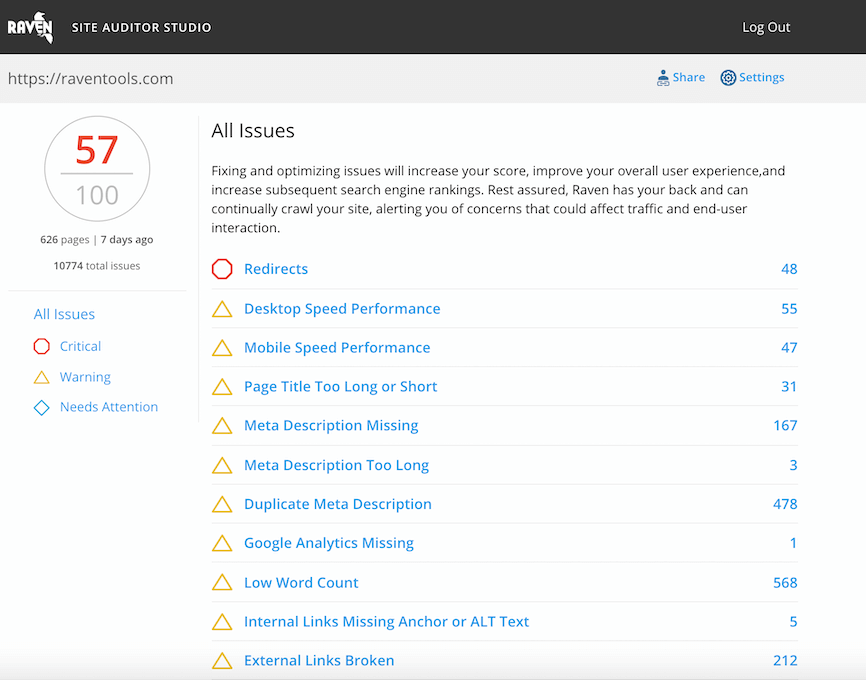Remember the days when only die-hard nerds could get something online? Luckily they are long gone! First, third-party sites simplified online content publishing – but at the expense of your content, freedom and privacy. Now is the time to publish with ease on your own terms (as long as those terms don’t include a protection of your own privacy – or wait – Can you share with the world while retaining some type of privacy?)
So, how did we get here?
It’s important to understand all the hidden processes in the background that allow the end user – that is you – to create a self-controlled website with no hassle nowadays.
Do you remember the nineties? If you started out on the Web 20 years ago, you know that it wasn’t always easy to publish online. It was a huge leap forward from publishing houses and print media. Yet it was still geeky, and often frustrating. Over the years the process got streamlined.
Now that the Web is already 30 years old let’s remember online publishing’s past, and learn from it! We are here now because there were tools that brought us here. We have come a long way indeed. Websites have evolved so far from the days of geek-only tinkering with HTML code. So, what are the key lessons from the past of online publishing that still apply today?
Websites Aren’t Cool – Unlike the Latest App… But They Will Outlive it
Unless you didn’t notice, Facebook is on the way out. Mark Zuckerberg has you hooked with Instagram and WhatsApp and is now pushing to merge all three platforms. Yet already other apps are stealing the show. The chase for the next big thing is always ongoing.
Facebook managed to be the leader for a decade, which is that’s long by the standards of the Web. What many people tend to forget is that websites will still be around when the next cool app has already gone.
There is one reason for it: websites allow you to publish online on your own terms. When you use a third-party service or website to publish your content, you are basically working for someone else for free.
“When you aren’t paying for a service you are usually the product.” – Metafilter
They make money by using your creations to generate ad revenue. Any person who has actively participated in the social media crazes from the beginning of the century probably knows this already, but a cool service today is a forgotten service tomorrow. Never mind:
- Friendster
- MySpace
- Tumblr
There are dozens of other, smaller services that have come and gone over the years. Some of them still exist having been acquired and sold again half a dozen times until the last Cent is pressed out of them. Once the hype is over the cool crowd moves elsewhere and the mainstream follows sooner or later.
The Slow Evolution of Online Publishing on Websites
While social media sites have come and gone, there was also a slow but steady evolution of both third party and independent online publishing. By independent we refer to an online presence without middlemen like Facebook that control your content and sell access to your audience back to you.
Let’s take a look back at the stages that have now simplified the online publishing process so much that anybody can do it – even your parents, partners or kids… When they aren’t dressing up as their favorite Star Wars characters.
Each historical stage of online publishing has been also an important step towards a better user experience for those who want to actually make themselves heard (or rather, read) on the Web. In a way, each era introduced a new unique technique of publishing that still works well to this day.
College Websites Encouraged Content Categorization and Curation
Many of the early online publishers created their very first website in college. You can still look up some of those (often well-curated) link lists by students from the nineties.
These early websites were often simple homepage affairs where everything was on one page and you had to scroll to view more. Remember that in those days clicking a link amounted to self-sabotage. The World Wide Wait could take minutes to load!
Thus categorization, table-based websites, and portals were born. Webmasters attempted to pack as many links or as long texts as possible on one page. Images were still a new thing and uploading or viewing them was still a hassle so they were still scarce.
The early college inspired sites were mostly about text – or rather, hypertext: text connected with links. Modern publications do not link a lot compared to those early days when everybody was amazed by the sheer limitless possibilities of interlinking websites. You did not need to write something down and publish it when someone else has already created a similar Web page!
What can those college websites teach us about online publishing then? They can show us:
- linking out
- categorization
- overview
Early Websites’ Text Editors and FTP Clients Made Every Line of Code and File Count
The very first college homepage you coded in plain HTML was only the first step. You also had to send it to the actual server that would serve it to the Internet users who wanted to view it.
Either you were already an expert and knew how to use not only a text editor like Notepad to write the HTML code, but also knew how to use FTP software. FTP stands for File Transfer Protocol and is mostly used to upload files (text, images, audio, video) to your Web server.
Some of the servers were actual computers standing in the same room. The college system administrator might even have had to approve the files you were sending to the server as long as you weren’t trustworthy enough to do that yourself.
These limitations made every single line of code count – because it was hard to write it – and every file upload was dreaded. Thus files tended to be tiny and the number of files was also small. Your very first website might have consisted of only text with no images and being just one physical file.
What can we learn from those text editor and FTP tools days?
- utter simplicity
- low page load
- limited number of files
Geocities and Web FTP Encouraged Boundless Creativity
In the late nineties, the first free website services like Geocities appeared. They usually would offer you a so-called subdomain like yourname.example.com or subdirectory example.com/sites/yourname for free.
Those sites often offered so-called Web FTP. It allowed you to move your files to a server right within your browser. This way people who did not even know what FTP is were able to get things online without having to download a thing.
Remember that you weren’t allowed to install software on college computers or in a library. People did not always have computers and Internet access at home yet. With Geocities you could create a website from anywhere with just a browser and it was hugely popular because of this.
Now that file upload and website creation became much easier new people flocked to online publishing while others who already did before became much more creative. Adding images became easier and animated Gifs became all the rage long before memes. Some people have overdone that so that their homepages were cluttered and blinking like crazy but nobody cared for user experience yet. The term hasn’t even been coined yet.
What can we learn from Geocities and the animated Gifs craze?
- ease of use and access
- boundless creativity
- too much of a good thing is bad
Blogger, WordPress, and Blogging Made People Write Regularly
Around 2000 Blogger and later other “weblogging” appeared. Later to be called blogging this step allowed average people to publish regularly. A static homepage was hard to update and became quickly overloaded. It was to spot the new additions in large link lists. Blinking “new” animated Gifs after each new link weren’t much of a help.
On blogs, the latest news got published on top automatically and pushed older content down below “the fold” so that you had to scroll to see it on the screen. Blogging tools also created archives by default so that you could look up existing content by date, category or author.
The first weblogs were a mix of diaries and newspapers. Those publishing them were very opinionated usually and thus became literal opinion leaders. Readers were very active themselves and usually commented a lot to bring attention to their own blogs.
This way a so-called blogosphere got created where bloggers had the impression to be part of something bigger than just their own blog. They were highly motivated to publish regularly and finally had the technical means to do so. Early startups like Blogger made a lot of money leveraging that community feeling.
Blog content was a valuable asset and was monetized subsequently by the platforms that offered to create blogs for “free”. Bloggers paid with their content unless they installed blogging software on their own Web space. Thus WordPress became popular among tools like MovableType or Textpattern.
What can we learn from early blogs, bloggers and blogging software?
- community support
- simple updating
- publishing on your own terms
MySpace Pages Spawned Fandom at an Unparalleled Level
MySpace was initially a site for musicians who could set up a page for their band. Over time it became popular not only among musicians and their fans but with a broader public.
Before Facebook pages there were MySpace pages.
“In June 2006 Myspace was the most popular networking site in America.” – Introduction to MySpace by rasher.
The typical MySpace page was colorful and overloaded like a Geocities site but it was much more image heavy and the structure was limited by the MySpace layout. You could customize your page and add a personal touch to it but it was always clear that you were still on MySpace. The space was not really yours. It was rather theirs.
The owners of MySpace changed a few times over the years to the point that it is meaningless by now. Yet in its heyday, MySpace was almost as important as Facebook became later and still is to some extent today.
Unlike with Facebook, you could use basic HTML to make changes to your MySpace page. Many people learned the basics of HTML because they want to edit their MySpace page look and feel.
While bloggers were all somehow on the same level there was a clear hierarchy on MySpace. You could see how many fans someone had and it quickly became a popularity contest. Pop stars had MySpace pages with millions of fans.
Bloggers were also popular but you could only see it on the level of engagement on their posts. The more comments – the better. There was no social proof – an actual number of followers or likes – on blogs. The MySpace popularity contest allowed to find out quickly who’s famous and who is not.
What can we learn from MySpace and the early years of social networking combined with online publishing? Only third-party tools like Technorati or Feedburner showed more or less accurate numbers you could use to brag about your blog popularity.
- engaging fans
- social proof
- popularity contest
Facebook started out in 2006 as a site for college students who wanted to connect online. As you probably know it quickly turned into a phenomenon outside of higher education and became widely known for its news feed feature where you could view “updates” from people you know or pages you like.
On Facebook the latest updates would show on top – just like with blogs run by bloggers themselves. Most profiles were private initially and images were only shared among often real-life friends and family.
Facebook not only used the same popularity model as MySpace – the number of friends or fans was publicly visible it later also made popularity on granular level visible by adding the Facebook like to each update, comment or image.
While some types of updates tend to get more comments than others – for example things people rather disagree with – the dead simple “like” button made content that was unremarkable but people could relate to and agree with stick out. The more mainstream or simplified a message the more people could “like” it.
Rewarding people with numbers that suggest success but are merely virtual is called gamification. Like in a game you just want to get more points and reach the next level or unlock the next achievement. You want to see yourself on top of a score list.
People who didn’t even know what blogging was, just did it on Facebook and were hooked to the service as long as they got feedback – be it friends, likes or comments. The more you had on Facebook the better you felt even though studies showed that social networking on Facebook can actually make you more lonely and even contributes to a higher risk of mental illness like depression.
For a decade Facebook was the most important website for most people. Sure, you would search on Google and watch videos on YouTube but most people spent hours per day on Facebook. What features did Facebook introduce that had a major impact?
- social networking
- gamification
- simplified blogging
“Microblogging” on Twitter and Tumblr Allowed Voiceless Fringe Groups to Publish Content
While Facebook was great to publish content and spread mainstream news and gossip or to share private photos of babies and cute pics of pets it was hard to use by fringe groups at first.
For those who didn’t fit in or were not that popular from the start, the popularity contest could indeed backfire. Depression levels rose with Facebook and teens were particularly vulnerable to the online peer pressure.
Some minorities had particular problems with Facebook over the years. Yet even mentally-healthy teens had difficulties. Your parents were always potentially lurking in the background watching your steps, especially since Facebook required you to use a real name.
- Teens
- minorities
- outsiders
and all other people who weren’t comfortable on Facebook used other tools to publish and spread their content. Twitter and Tumblr became the epitomes of the microblogging trend.
These sites did not force users to publish under their real name. The updates were public and were concise or visual in nature. What can we learn from microblogging tools?
- anonymity
- keeping it short
- using visuals
Pinterest succeeded with what has been called “image bookmarking” before. The site has been mostly used by women – at least in the early years. The topics ranged from travel photography, fashion, and cosmetics to food or recipes. Wedding planning was a major topic on the visually oriented site.
You could envision a bright, happy or adventurous future on Pinterest without taking photos yourself. Just sharing existing material – like on Tumblr was sufficient. Yet Pinterest also curbed the spread of x-rate imagery. Tumblr and other image bookmarking sites didn’t.
That’s why Pinterest became a family-friendly go-to place for women of all ages looking for inspiration and a positive impact on their life. No matter how shy you were you could publish on Pinterest just by sharing other people’s content or most importantly repinning it.
Pinterest is still one of the most influential social media sites and the second largest social media site when it comes to traffic to content publisher sites. It’s not as huge as other services and some people still think it’s only a site for women. But in reality, it’s hugely successful. What are the lessons from Pinterest’s success?
- embracing women
- being family-friendly
- allowing the shy to publish
Website Builders Made Average People Create Real Websites
While many people were convinced that having a Facebook page was enough of an online presence even for small businesses others weren’t convinced. They still wanted to build an actual website for themselves.
Most people either weren’t geeky or affluent enough to create one though. For all the average people who weren’t able to create a website themselves or to pay someone to build one so-called website builders were the seemingly perfect alternative.
Website builders take the hassle out of website publishing. You often just have to use the mouse to drag and drop elements you want to use. Sometimes clicks are sufficient. Just choosing an option is enough.
Yet website builders retain control of your website in most cases. They can even delete it. You are not really hosting your content there, you create content on them. You can’t really move those assets once you’re done with the service on most website builders.
While it’s easy to create such a site on third-party turf you may regret it later on. Only do it when you are aiming for the short term anyway or are just building a supportive microsite. Your main Web presence has to be self-controlled. What did website builders do right?
- low barrier to entry
- free or affordable publishing
- ease of use
Instagram Gave Non-Celebrities their Well Deserved 15 Minutes of Fame
Instagram fame is still “the thing” these days. Even though the app initially was about editing (think adding filters) publishing photos with ease it’s now mostly about fame and influencers it seems.
Some people seem to thrive by just publishing their travel, make-up and fashion photos on Instagram. The site is very closed. It’s even hard to link to other sites on it. It’s so widespread there are even scientific studies on its impact on the well-being of teenagers. Sadly it’s quite negative.
No matter how depressed some kids become due to reveling in glossy Instagram lifestyles the site pioneered and popularized the “15 minutes of fame” type of online content publishing. It’s about putting yourself and your photos out there for others to view, like and comment on. Some people have millions of followers yet most of us are seemingly not sexy enough to be successful on it.
Still, there is a significant number of non-celebrities – that is people who haven’t been famous or popular before Instagram – who can even make a living out of the site’s popularity. The service is encouraging not only showing off of almost naked bodies but also the creation and publication of high-quality photography.
Anybody can get a large following when publishing great photos regularly. Websites, blogs and social networking sites have often focused too much on written content and neglected actual images. It’s easier to become famous on Instagram when you speak the universal language of photos.
Even though many – especially younger people have left Facebook – many of them remained on Instagram despite the fact that it’s also owned by billionaire Mark Zuckerberg who is known for selling people private data for profit. What are the positive aspects of Instagram?
- everybody can become famous
- visual content is paramount
- regular content publishing builds audiences
Instant Messengers Let Individuals Build Faithful Audiences
Mark Zuckerberg not only owns Facebook and Instagram, he also owns WhatsApp. WhatsApp, Snapchat and similar real-time communication tools are known as so-called Instant Messengers.
Unlike Facebook and Instagram, these apps are not about exposing yourself to a broader public. They are basically about sharing things with others in private. Messages are not publicly visible and access is even encrypted by now.
Even though instant messengers do not make people famous like Instagram they still create faithful and trustworthy audiences.
Creating a WhatsApp group is by now an obvious choice for all kinds of loose circles of friends who want to stay in touch. Whether you are training with a team, praying togpubether or managing meetups for parents – a WhatsApp group is the de facto standard way of doing it.
Just send something to the WhatsApp group and everybody notices it quickly and even while on the go. They can act upon it almost instantly whether online or in real life. Staying connected to such smaller groups feels much more natural than being one of 500 friends on Facebook. People feel safer on messengers because the messages are not public and often disappear shortly after publication. Parents can’t spy on their kids. What can we learn from instant messengers?
- reaching people on the go
- instant support
- small audiences are more engaged
WordPress Made Self-Controlled Websites Available to Almost Everyone
As noted above in the blogging section WordPress has been around for 15+ years among other content publishing tools yet somehow it managed to become the market leading online publishing software despite the competition being much more advanced in the early days. How come?
Ease of use has been one of the major benefits of WordPress from the start. Working with other blogging tools at the time was a nuisance at best. Even Blogger made it difficult to comment let alone ping other blogs for many years, despite the acquisition by Google.
Google could have revamped Blogger – they certainly could afford it – but somehow they didn’t. They neglected just like many other popular blogging tools they owned – think Feedburner or Google Reader. The most obvious drawback of Blogger was that it was Google’s – not yours.
With WordPress, self-controlled online content publishing went mainstream for a reason – ease of use.
More advanced CMS like MovableType or TypePad were also much more difficult to run. The term user experience still hasn’t been coined yet but WordPress already excelled at it. The very first WordPress backend and editor looked very basic, even ugly, yet it allowed mere mortals like you and me to
- write
- edit
- manage
- publish
content be it textual or visual. Early blog posts often did not even contain images. They were most often short remarks with a link or even without one. By now you would call it microblogging if at all refer to blogging. People share content like this all over the place without ever referring to it as blogging anymore.
In recent years it became even more user-friendly. It updates automatically. You do not have to use external tools for file upload or even image editing anymore. You can do everything within WordPress. Content publishing can be automated, aggregated, and simplified. Oh what a world we live in.
Over the years WordPress has been even more simplified by third parties like hosting companies, service providers and developers who created plugins. You can now have your WordPress customized and adapted so much to your needs that custom websites are far less feasible and much more expensive in comparison. What can we learn from modern WordPress or WordPress in general?
- doing everything in one place
- automating things where it makes sense
- customizing and flexibility
Using Content Publishing Techniques from Almost 3 Decades of Website Creation
Now, after 30 years of the Web, you can combine all these things to get your online presence up and running with ease by
- creating a website
- publishing content
- building an audience
You can do all of these with ease like never before. It’s important to keep the lessons from the past in mind though. Otherwise, you may complicate things or add too much of a good thing.
Ideally, you create an overview, categorize content and link out to other websites like on college websites. Most sites make the mistake of publishing content dealing with the exact same topics that have been covered by others already in depth instead of linking to those existing resources. That’s the infamous me too content. Link out to what we know and add something new then or just skip the post.
Ideally, you build slim pages that load fast even on mobile phones or slow connections and make sure your content is also creative but don’t overdo it like Geocities pages have done it the past. Compiling lists of links is fine but adding more and more of the same won’t automatically improve your content or make your website more popular.
Ideally, you just create content that is always unique and not just a slightly changed version of an existing one. Adding more items to lists doesn’t always results in bigger and better content. Sometimes size can be overwhelming and choice overload is a common issue these days science has shown us…
You do not have to add all the content publishing techniques from the last 30 years at once! At the end of the day just:
- Don’t add more of the same, link to existing content like on college sites in the nineties!
- Keep it simple when possible like early websites did!
- Be creative but don’t overdo it like on Geocities!
- Write regularly like the original bloggers did when Blogger and WordPress were still new.
- Reach out to your fans and make them happy like musicians did on MySpace.
- Create quick and dirty shareable content like on Facebook.
- Be yourself and show your geeky quirks like on Tumblr
- Make women, introverts and kids feel welcome like Pinterest does.
- Choose easy to use tools that are hassle-free like website builders.
- Publish content regularly to build an engaged audience like on Instagram.
- Connect with small trustworthy groups like on Instant Messengers.
- Use one tool for as many things as you can like you can on modern WordPress!

Analyze over 20 different technical SEO issues and create to-do lists for your team while sending error reports to your client.








